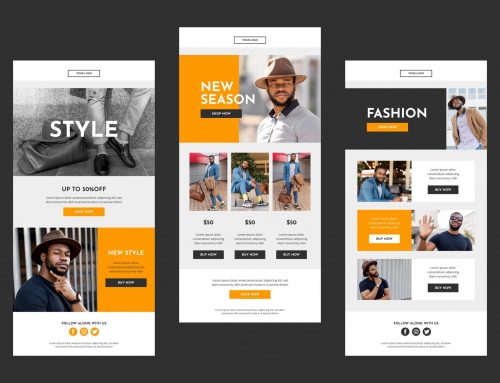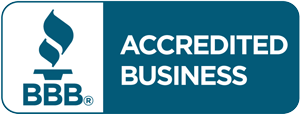A Designer’s Guide to Dielines
A die is a tool that cuts, scores, or makes an indentation on printed materials. And a dieline is the shape / artwork the die uses as a guide when making cuts, scores, and indentations. Dielines are crucial to the package design process, and are designed using a specific set of rules and industry standards.
Are you working on a brand new package design? Curious about what it takes to make a dieline, or interested in making a dieline of your own? The ocreations team has plenty of experience with package design and dielines, and has the answers you’re looking for!
Before you get started, there are a few preliminary questions to ask before designing the package dieline:
What is the size of the product?
The size of the product you’re designing packaging for will come in handy, as your die line needs to be able to comfortably hold your product in place. A package design that is too big will cause your product to move around too much in the package, and risk the product getting damaged. And a package that is too small will risk your product popping out of the package and getting damaged or lost.
What is the weight of the product?
The weight of your product will determine what kind of material to use for the package. Depending on the type of material, this may affect your dieline design.
How will it be displayed?
Is this product going to hang up on racks? Or will it sit on a shelf? It’s always important to understand if your package will require any special cutouts, extra flaps, etc. when designing your dieline.
How are competitors packaging their product?
Check out the competition! See how they package their products. If they have a great package design, grab a sample and use it for inspiration when designing your dieline. If you notice any flaws in competitor package design, take note of what not to do.
Who is the printer and do they have any requirements?
Reach out to the cooperating printer before you begin your dieline! Typically, printers prefer dielines created in Adobe Illustrator. However, it’s always a good idea to double check before you invest time into designing a dieline in the wrong design program.
Setting Up Dielines:
Typically, there are 7 components to a dieline:
1. Trim Line
The trim line is the actual size of your final piece that will be cut and folded. This is the basis of your physical package design, and is typically created with a white fill and a red or hot pink stroke.
2. Bleed Line
The bleed line is placed outside the trim line, and acts as a safety net for any artwork that will extend to the edge of the trim line. The bleed area is printed, but will be trimmed off according to the trim line. Usually the bleed line should be placed .125” from the trim line equidistantly around the package. However, depending on your printer or the size of your package, you may need to increase your bleed width.
3. Live Area/Safe Zone Line
Safe zone lines are to note the area that will be guaranteed to be visible. This is especially important for designers who will be using the dieline as a guide for their artwork. It well help guide their design to make sure everything important is visible and does not get cut off, look of-center, or awkward.
4. Fold Line
Fold lines are noted to show where the different planes of your package design should fold and create a dimensional package. This is not only important for reference when packages are being built, but it is also important for you, the designer, to make sure important design elements are not placed along those fold lines.
5. Perf Lines
Create lines on your dieline layer to show where any of the package design will be perforated. Some packages need perforations for punch-outs, tear-offs, etc.
6. Interior Die Cut Lines
Some package designs have windows or cut-out areas. If this is the case in your project, make sure to create a separate line for this. Die cut lines indicate custom sections that need to be removed on the interior of the piece. For instance, windows that show your physical product on the inside of the package.
7. Glue Areas
This part of a dieline indicates areas where the package will have adhesive applied when building the final package.
Additional things to note on your dieline art file:
Make sure that dimensions are clearly noted for panel sizes and especially overall flat size of dieline.
This allows the printer to know the size sheet necessary for printing/estimating.
Make sure to note any glue areas.
This will help the printer understand where to glue pieces of
Make sure to note any window areas.
This lets the printer know where to cut out any window pieces that will show the product inside the package.
Make sure to note any additional special instructions.
If there is anything out of the ordinary, or anything you think is especially important for the printer to know, definitely call it out.
Make sure to make use of your layers in your Adobe Illustrator file.
Keep your dieline on a separate layer from your artwork. Also make sure to label your layers accordingly. This will not only keep yourself organized, but will also keep things organized and easy to understand for the printer.
So, what are the benefits of well-executed dielines?
Peace of mind
Knowing that you’ve designed a dieline that you’ve tested and mocked up will give you peace of mind when handing off your design files to a printer.
Good Printer Relationship
A well-executed dieline will make your printer’s life so much easier as well. If the printer can look at your dieline and easily understand sizes, crop marks, fold lines, etc., it will ensure the project runs as smoothly as possible. This will build a strong, trusting relationship between you and the printer.
Good Client Relationship
A well-executed dieline will also build a strong, trusting relationship between you and your client. A dieline that is well planned demonstrates to the client that you have a great understanding of package design, you can think outside (or inside) the box to create something functional and visually-appealing, and you can work well with a printer to create a beautiful final product.
So, now that you have the basics of what a dieline is, what it should look like, and how it should be set up, now’s the time to try it out for yourself!
ocreations has an abundance of experience in package design, and works with dielines almost every day. Need a new package design for an existing product? Or, in need of a brand new package design for your brand new product? Contact us at ocreations today. Let’s get packaging, let’s get creative.







